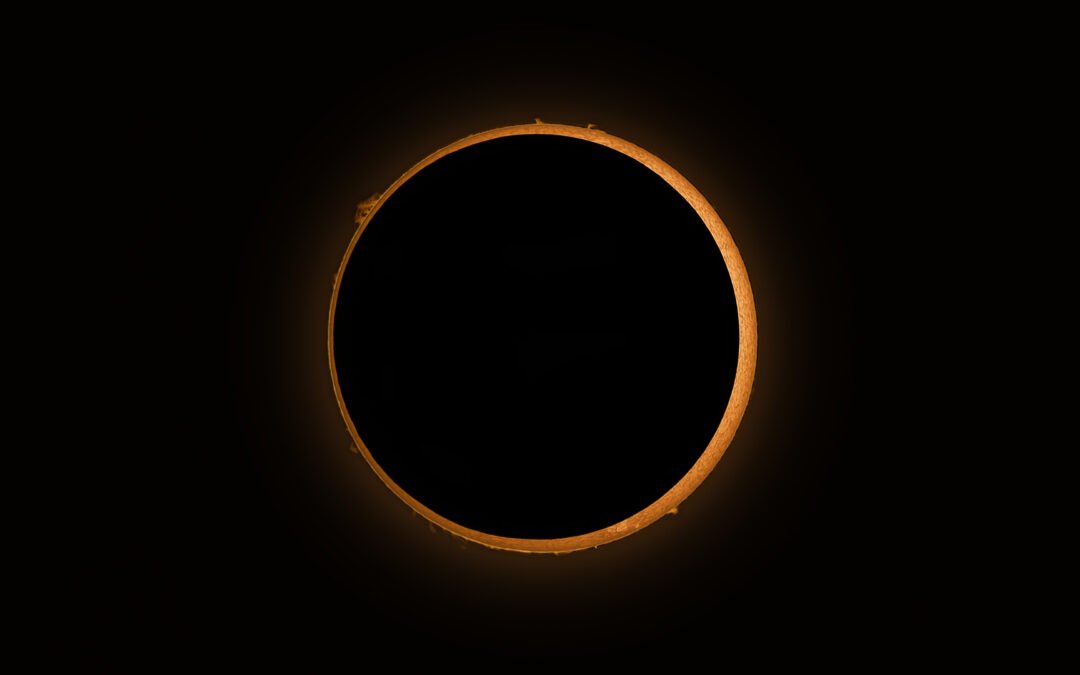I was fortunate enough to witness and capture the fascinating “ring of fire” of the annular solar eclipse from Fair Oaks Ranch, TX, on October 14, 2023.
What is an Annular Solar Eclipse?
Solar eclipses occur when the Moon passes in front of the Sun as observed from Earth. If you stay in the middle of the eclipse path, you can see how the Moon either fully covers the Sun (total eclipse) or moves right in front of it, leaving the solar edges open to our view (annular eclipse). In an annular solar eclipse, the apparent diameter of the Moon is smaller than that of the Sun, blocking most of the Sun’s light and causing the Sun to look like a ring (often called the “ring of fire”).
My Journey to Capture the Eclipse
I could observe partial phases of the eclipse from my home in Williamsburg, VA; however, I wanted to see the full phase of the eclipse as I had never seen it before. I took a flight from Richmond, VA, to San Antonio, TX, and stayed at my friend’s place. Luckily, they live in the middle of the path, so I just set up my telescope in their backyard.
The eclipse day began with uncertainty, with clouds casting their unpredictable shadows. I was a little worried, although weather models predicted clear skies later in the day. The first contact of the eclipse occurred in clouds, but as the phase of the eclipse was growing, the weather was improving as well. The cloudy beginning quickly turned into one of the most memorable experiences of my astrophotography journey. Even as the skies played hide and seek at the onset of the eclipse, nature was on our side, revealing its wonders just in time for the annularity phase!
And here I have it – a spectacular image of the maximum phase of the annular solar eclipse.

Gear I Used to Capture This Image:
- Telescope: Lunt 50mm B600
- Camera: ZWO ASI178mm
- Mount: iOptron SmartEQ Pro+
About the Lunt 50mm B600 Solar Telescope
The Lunt 50mm B600 is a dedicated solar telescope designed specifically for observing and imaging the Sun. It features a high-quality hydrogen-alpha filter that allows you to safely observe and capture the Sun’s surface details and prominences. The B600 model includes a 6mm blocking filter, which is crucial for providing a clear and safe view of the Sun’s intricate features. This telescope is compact, making it an excellent choice for travel and quick setup, which was perfect for my trip to Texas.
Reflecting on the Experience
This experience not only marked a significant milestone in my astrophotography journey but also reminded me of the wonders of nature and the beauty of the cosmos. Watching the annular solar eclipse in person was an awe-inspiring moment, and I’m thrilled to share this image and experience with you.
I am also very excited about the upcoming total solar eclipse on April 8, 2024. It will be visible in different phases for most people in North America. I plan to travel to the middle of the eclipse path to witness the totality.
Stay tuned for my post about the total solar eclipse. Fingers crossed, I will be able to see it!

